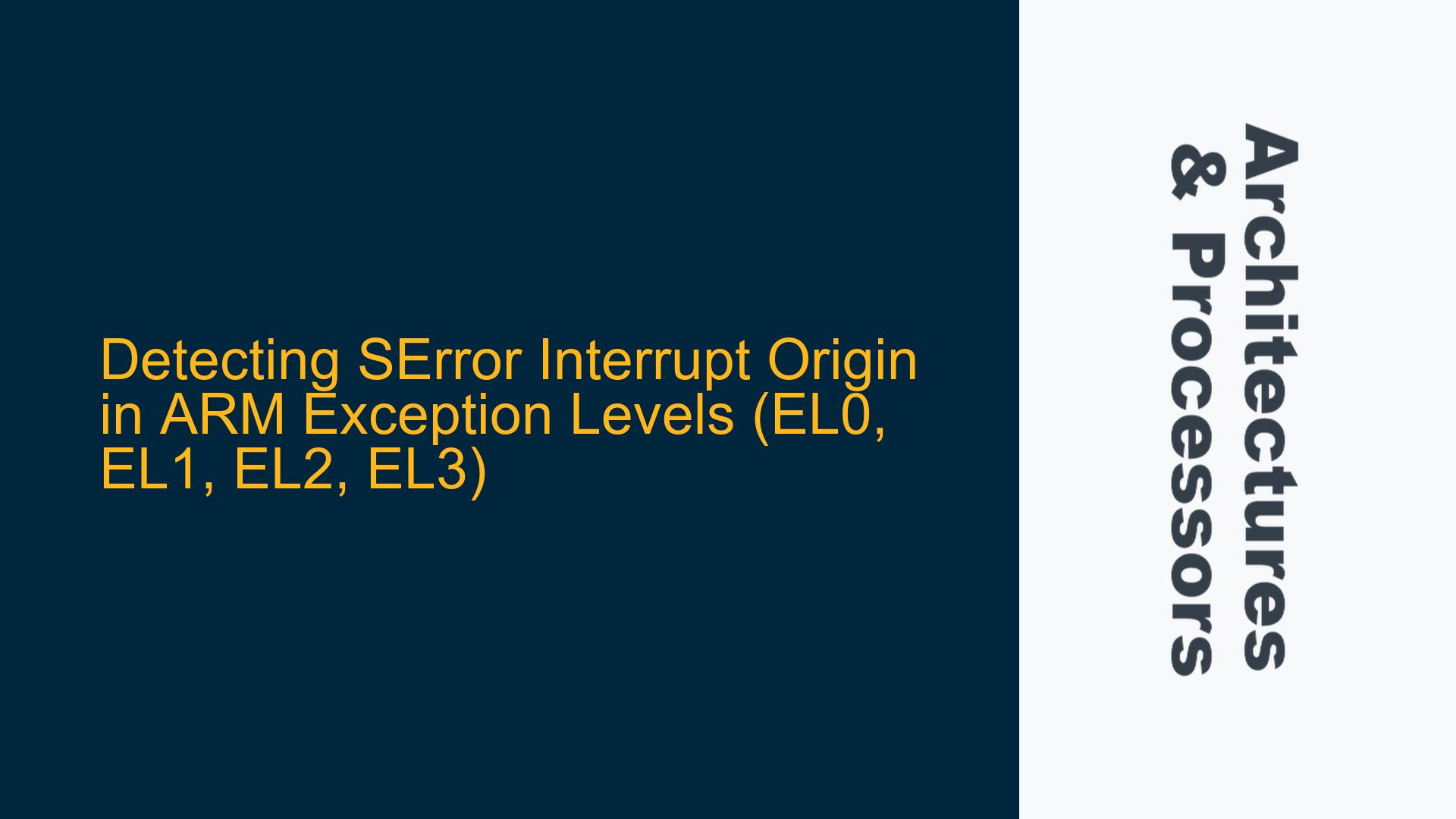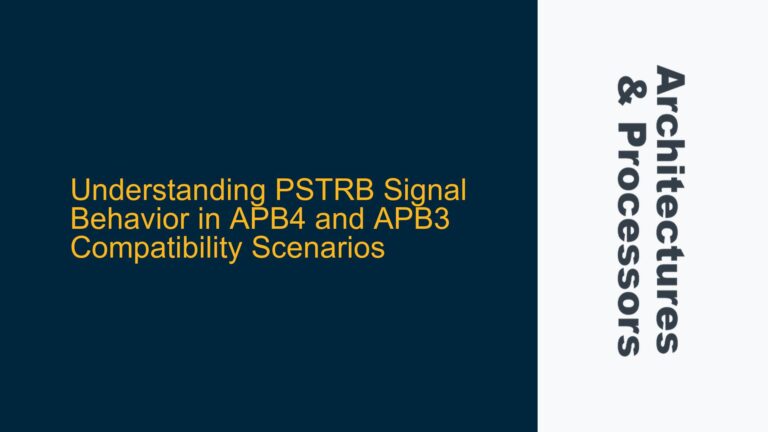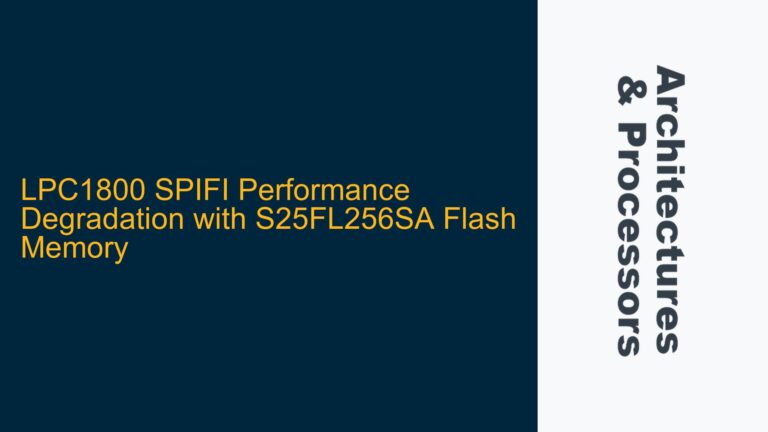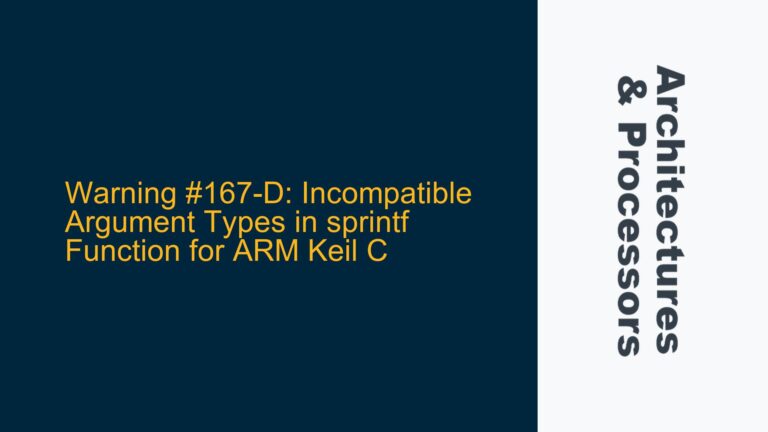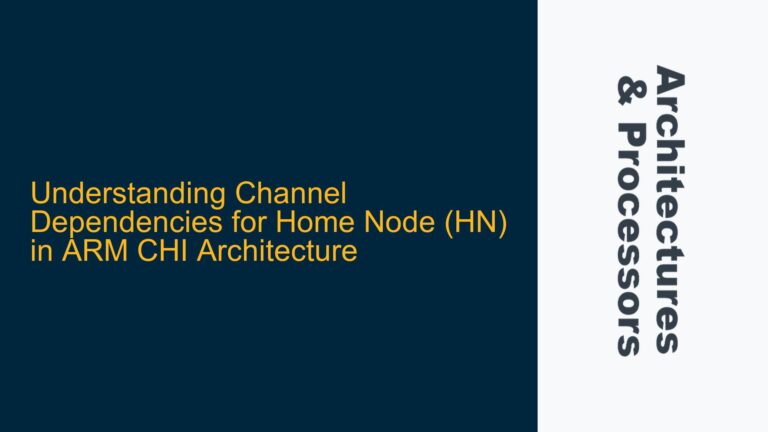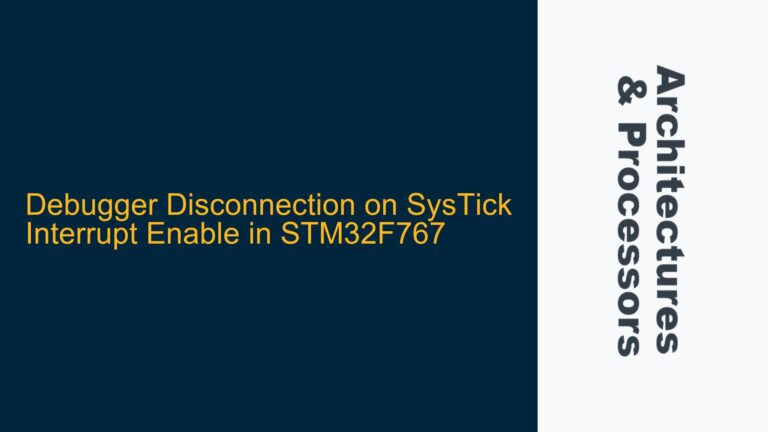SError Interrupt Handling and Exception Level Confusion
The ARM architecture defines SError (System Error) interrupts as asynchronous aborts that can occur due to various hardware faults, such as memory system errors or incorrect device register accesses. These interrupts are critical for system reliability, but their asynchronous nature complicates determining the exact Exception Level (EL) where the fault originated. The core issue revolves around whether the SError interrupt handler can reliably identify the Exception Level (EL0, EL1, EL2, or EL3) where the fault was triggered, especially when the fault is delayed due to the asynchronous nature of the memory system.
In ARMv8-A, SError interrupts are handled by specific exception vectors, such as serror_el1_vector for EL1 and similar vectors for EL2 and EL3. However, there is no dedicated vector for EL0 because EL0 is not designed to handle exceptions directly. Instead, exceptions originating from EL0 are typically routed to EL1. This raises questions about the reliability of using the exception vector to determine the fault’s origin, particularly when the fault is delayed and the CPU has transitioned to a different Exception Level before the SError is generated.
The confusion is further compounded by the asynchronous nature of SError interrupts. For example, an incorrect memory access in EL0 might not immediately trigger an SError. Instead, the fault might be reported later when the AXI transaction completes, by which time the CPU might have transitioned to EL1. In such cases, it is unclear whether the SError handler will attribute the fault to EL0 or EL1. This ambiguity can lead to incorrect fault handling and debugging challenges.
Asynchronous Fault Reporting and Exception Level Transition Timing
The primary cause of confusion lies in the asynchronous nature of SError interrupts and the timing of Exception Level transitions. SError interrupts are triggered by hardware faults that are not immediately detectable at the point of instruction execution. For example, a write to a read-only device register in EL0 might not generate an immediate fault. Instead, the fault might be reported later when the memory system processes the transaction. This delay can result in the CPU transitioning to a higher Exception Level (e.g., EL1) before the SError is generated.
Another contributing factor is the lack of detailed fault information in the ISS (Instruction Syndrome Register) for SError interrupts. Without the ARMv8.2 RAS (Reliability, Availability, and Serviceability) extension, the ISS provides minimal information about the fault’s origin. Even with RAS, accessing error records at EL0 is often restricted, as most RAS registers are marked as read-write UNDEFINED at EL0. This limitation makes it difficult to determine the fault’s origin when the SError is handled at a higher Exception Level.
The routing of SError interrupts also plays a role. By default, SError interrupts from EL0 and EL1 are routed to EL1, unless specific configurations route them to EL2 or EL3. This routing behavior further complicates the determination of the fault’s origin, as the handler might not have access to the necessary context to identify the original Exception Level.
Implementing RAS and Context-Aware SError Handling
To address the challenges of determining the origin of SError interrupts, developers can leverage the ARMv8.2 RAS extension and implement context-aware SError handling mechanisms. The RAS extension provides facilities for examining error records, which may include a valid physical address associated with the fault. These records can help identify the fault’s origin, even if the SError is handled at a higher Exception Level.
When RAS is not available, developers can implement software-based techniques to track the Exception Level context. For example, the system can maintain a per-core context structure that records the current Exception Level and other relevant state information. This structure can be updated during Exception Level transitions and accessed by the SError handler to determine the fault’s origin.
Additionally, developers should ensure that the SError handler is robust and can handle cases where the fault’s origin cannot be determined. This might involve logging detailed diagnostic information, such as the contents of key registers and the faulting address, to aid in post-mortem analysis. The handler should also be designed to gracefully handle cases where the fault’s origin is ambiguous, such as by deferring fault handling to a higher-level recovery mechanism.
In summary, determining the origin of SError interrupts in ARM systems requires a combination of hardware features, such as the RAS extension, and software techniques, such as context tracking and robust fault handling. By implementing these strategies, developers can improve the reliability and debuggability of their systems, even in the face of asynchronous faults and Exception Level transitions.
